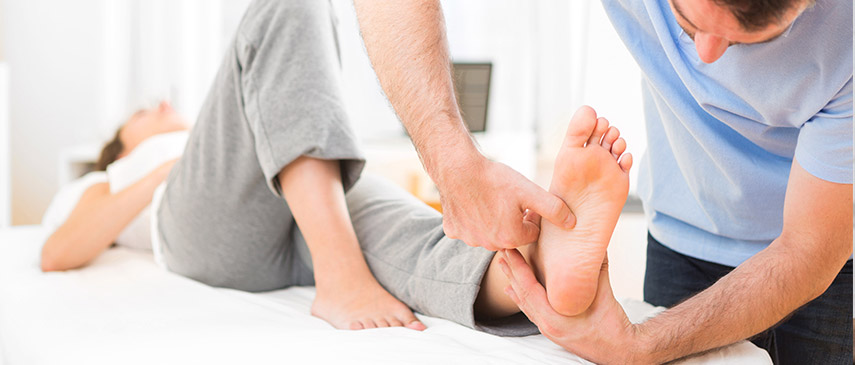For many people, simply standing or walking for more than 20 minutes, means an aching back. This can be due to a whole host of factors, but believe it or not, your feet and ankles can be a culprit.
When you walk the hips, knees, ankles and feet rotate in opposite directions to act as a shock absorber. In addition, your muscles provide support and cushioning to ensure that the pounding from your feet hitting the ground, dissipates throughout your legs, pelvis and spine.
Common ankle sprains, arch collapse and over pronation of the feet can lead to an over rotation at the knees and less support. Needless to say, this can change the whole mechanics of the legs. The end result is more force transmitted to your spine, which over time leads to strain and inflammation.
What you can do
- Wear supportive footwear when possible. Avoid wearing shoes with high heels when possible. You may need to talk to your physical therapist about orthotics or inserts in your shoes, depending on your arches.
- Keep your hip muscles strong. Weak hip muscles change the mechanics of your walking, causing strain to the back.
- Use supportive shoes for walking in the house, especially if you have hard floors, such as tile.
- Keep flexible, especially in your hips and pelvis. Tight adductor muscles can draw your legs slightly across when walking, causing increased pressure to the inside of the knee and arches.
How physical therapy helps
A physical therapist is a medical specialist in the biomechanics of the body. They study movement of joints, muscles and coordination. The vast majority of lower extremity pain and low back pain stems from mechanical dysfunctions. Therefore, by improving the mechanics of your body, you can easily regain strength, flexibility, function, and resolve pain.
For a biomechanical analysis of your back, hips, knees and ankles, contact Diamond Physical Therapy today. Discover how we can help you quickly relieve your pain and put the spring back in your step.


